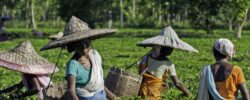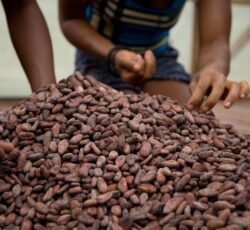Fairfood and the SDG’s: no poverty
For the UN, SDG 1 is the most important of all: an end to extreme poverty. The aim is that by 2030 no poverty, meaning that one will have to live of less than $1,90 day (obviously subject to inflation). In 2015 about 702 million people were living under this poverty line – 9,5 percent of the world’s population. Almost 1 in 10 people that is.
Subgoals
Fairfood specifically focuses on sub-goal 1.4: “By 2030, ensure that all men and women, in particular the poor and the vulnerable, have equal rights to economic resources, as well as access to basic services, ownership and control over land and other forms of property, inheritance, natural resources, appropriate new technology and financial services, including microfinance.”
As we write in our manifest, we want to help the people who sow, harvest and process our food. Because ironically enough, it is precisely those people who often lead a life full of poverty and hunger.
Our managing director, Sander de Jong, recently told One World about the poverty trap, in which a lot of the people behind our food find themselves trapped. This means that an economic system is designed in such a way that escaping poverty isn’t possible without external aid.
“In developing countries, over 1.3 billion people are working in food production”, Sander tells One World. “36 percent of all the food that is being imported by the Netherlands, originally comes from countries that struggle with precarious food situations themselves. The farmers often have poor access to capital markets for investments, have inadequate or outdated knowledge and deal with land depletion and bad infrastructure.”
The main problem is the way the profits are being distributed; most profit remains with supermarkets and traders, while only a smart amount makes it back to the farmers and employees. Of this small amount, these people can hardly meet their primary needs, let alone that a farmer is capable to make investments that’ll have him escape the poverty trap.
What we do
All of Fairfood’s work is aimed at getting more of the money to the farmers and employees behind our food. An example: in 2008, together with Stop the Traffik, we organized the Chocolate Bar Race. In this race we searched for the most sustainable chocolate bar out there. Verkade ended up being the big loser; at that time they were selling the ‘worst’ chocolate bar when it came to child labour and working conditions. What followed was an historic step: that very same year, Verkade announced that from that moment on they would only use 100% fair trade cocoa and sugar. With that, they were the very first major A-list chocolate manufacturer to make this transition, and with the size of the company, in one blow they grew the supply of fair trade chocolate with 20%. More fair trade products eventually means that more farmers receive a fair wage.
Given the figures we still have a long way to go, but we believe that together we can end extreme poverty by 2030.

